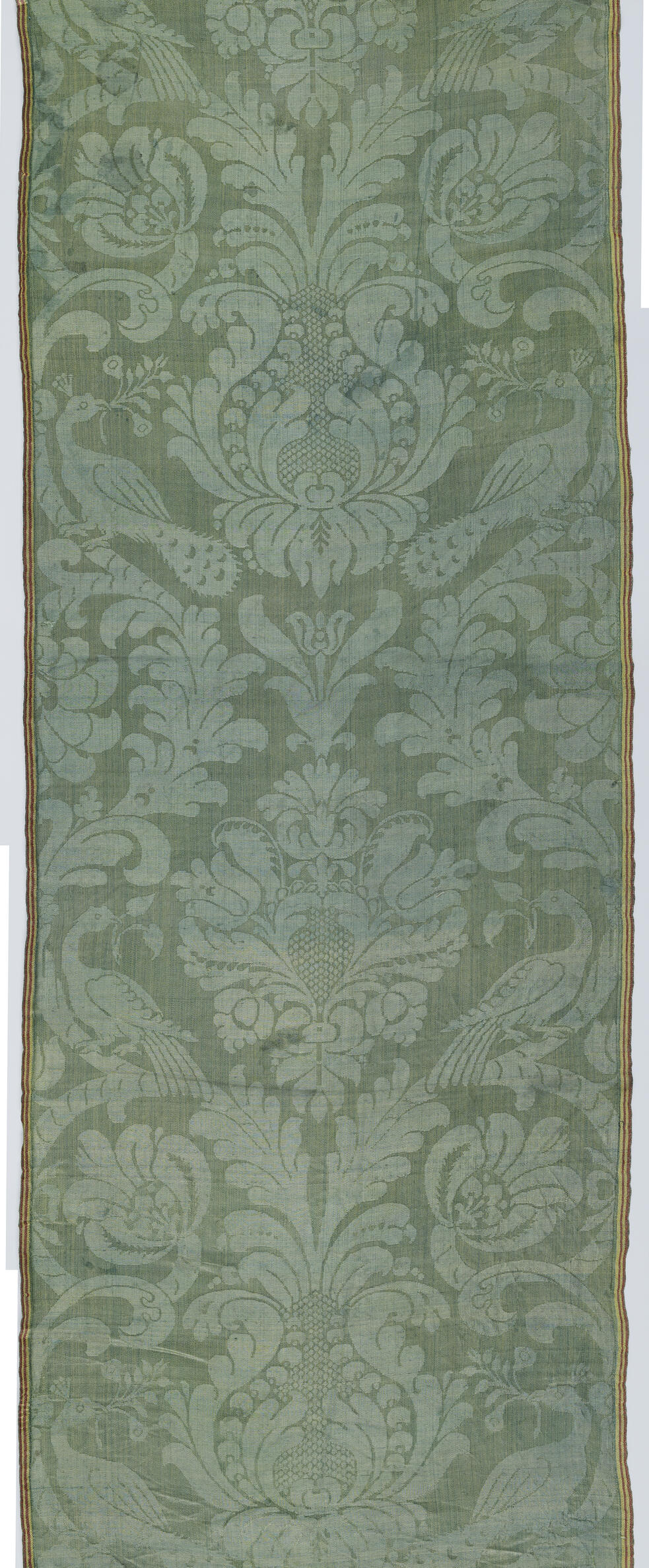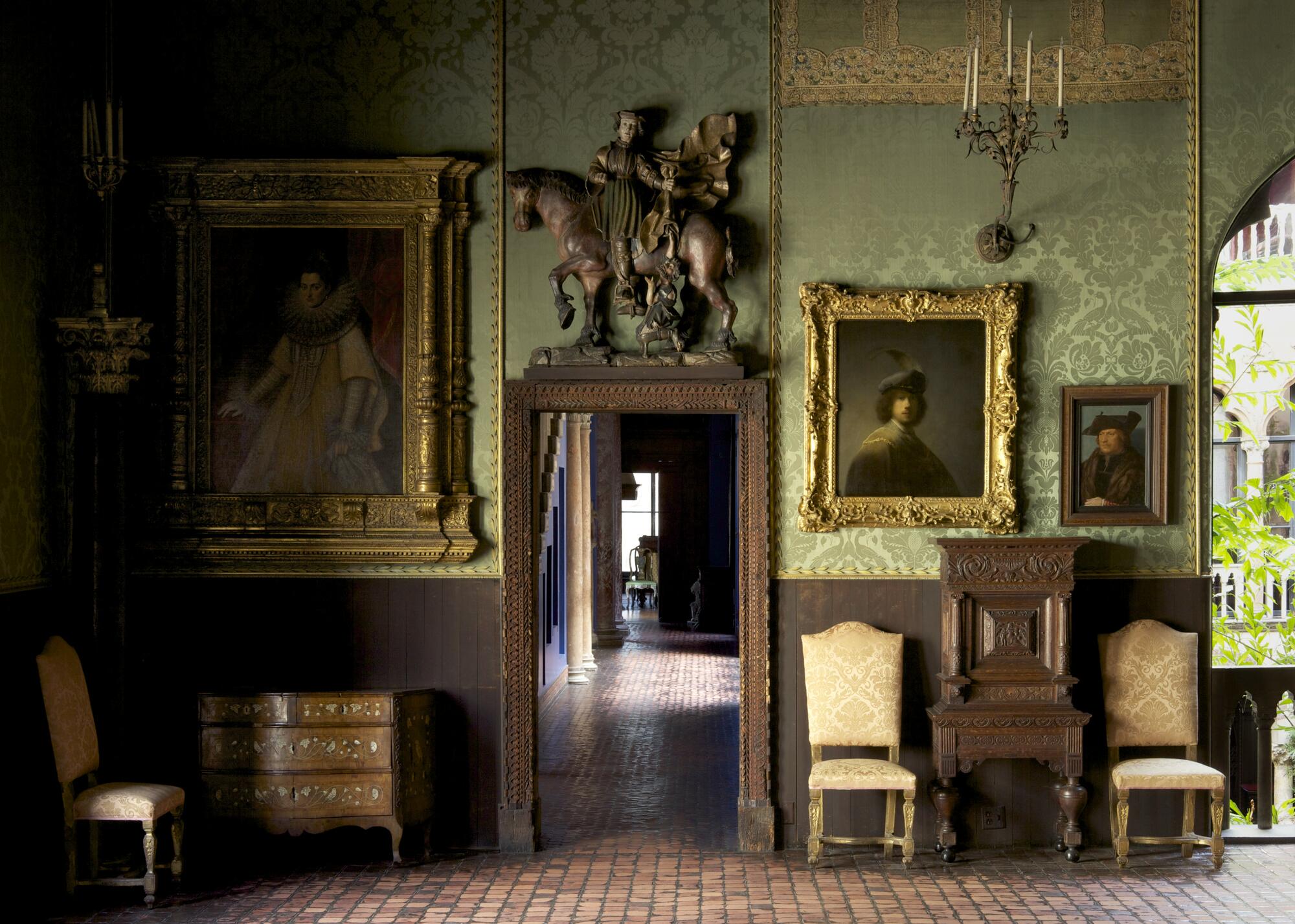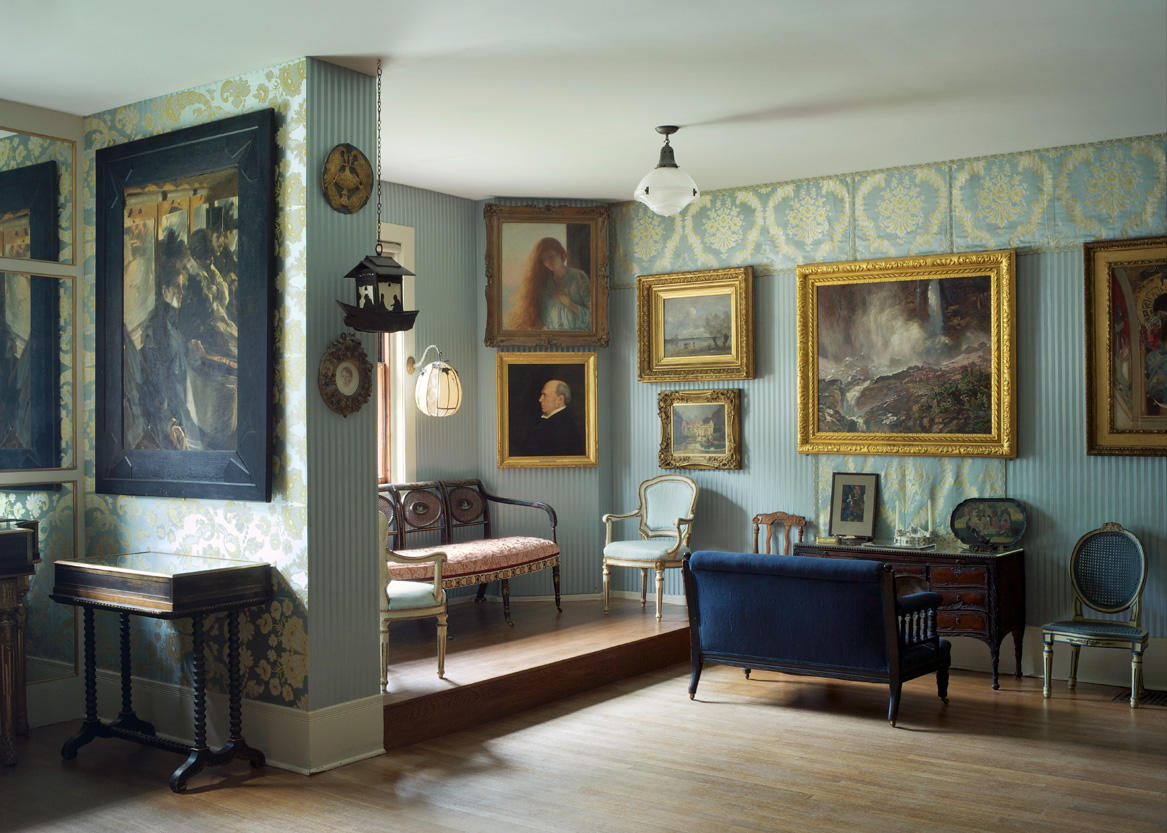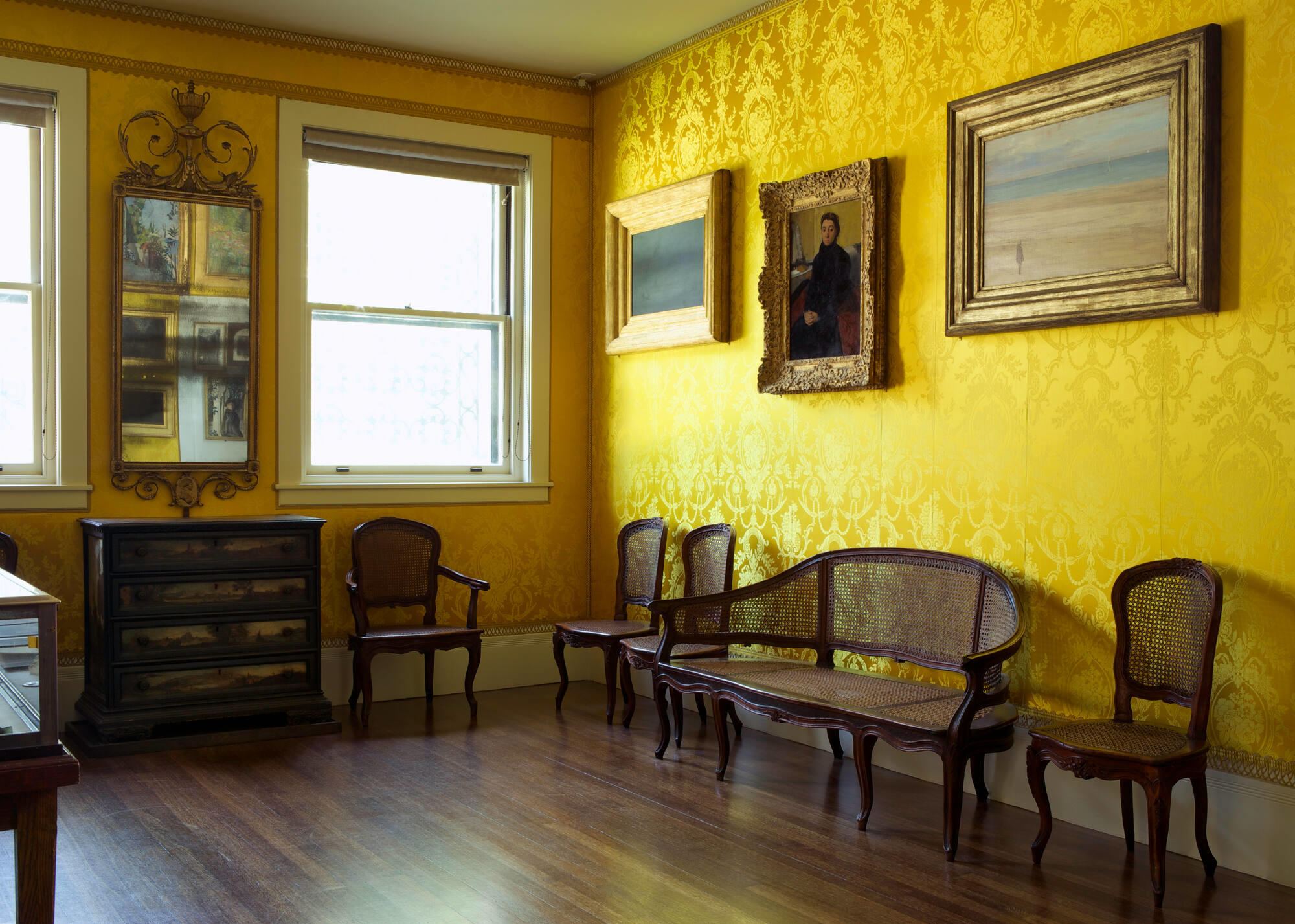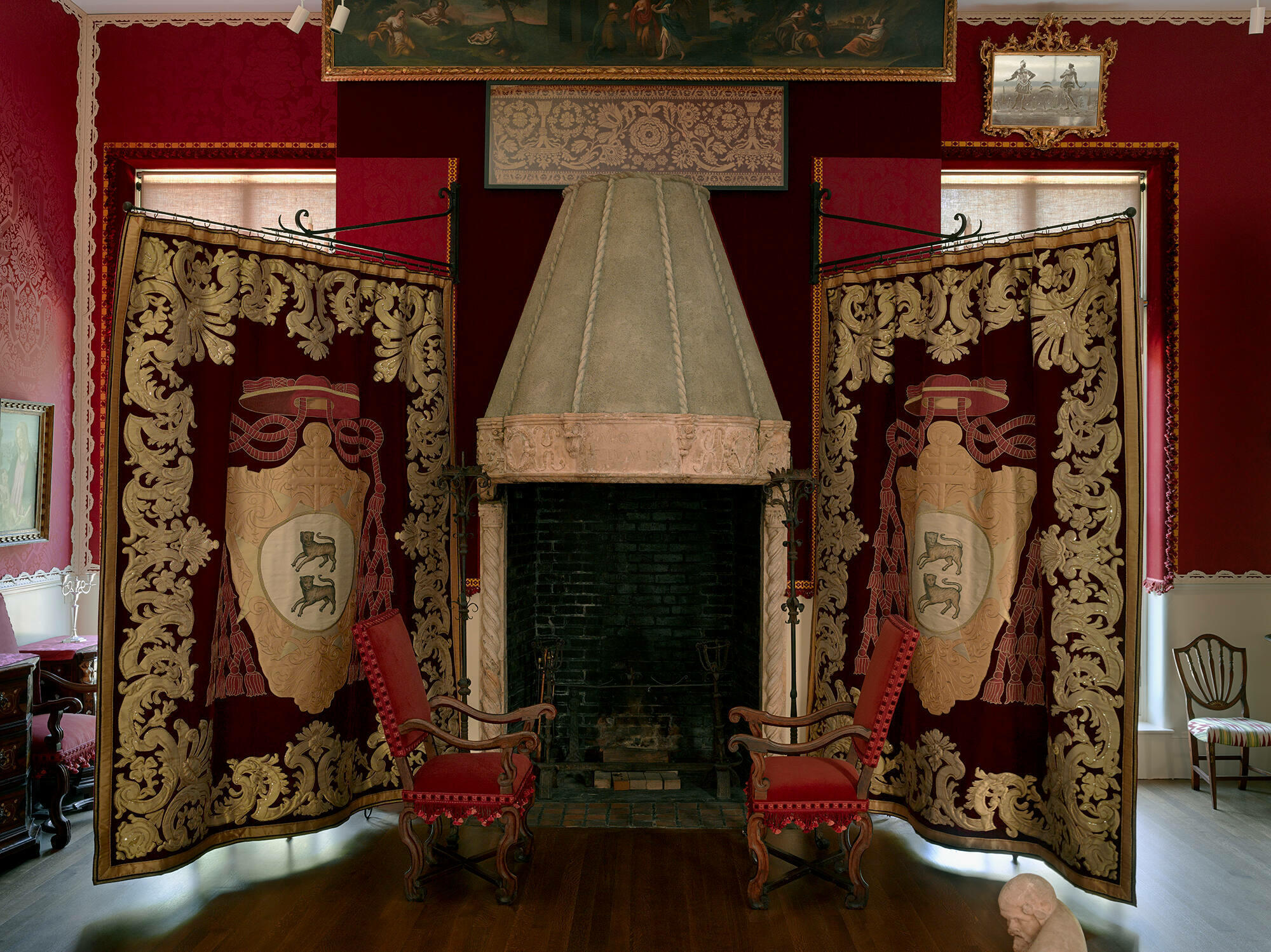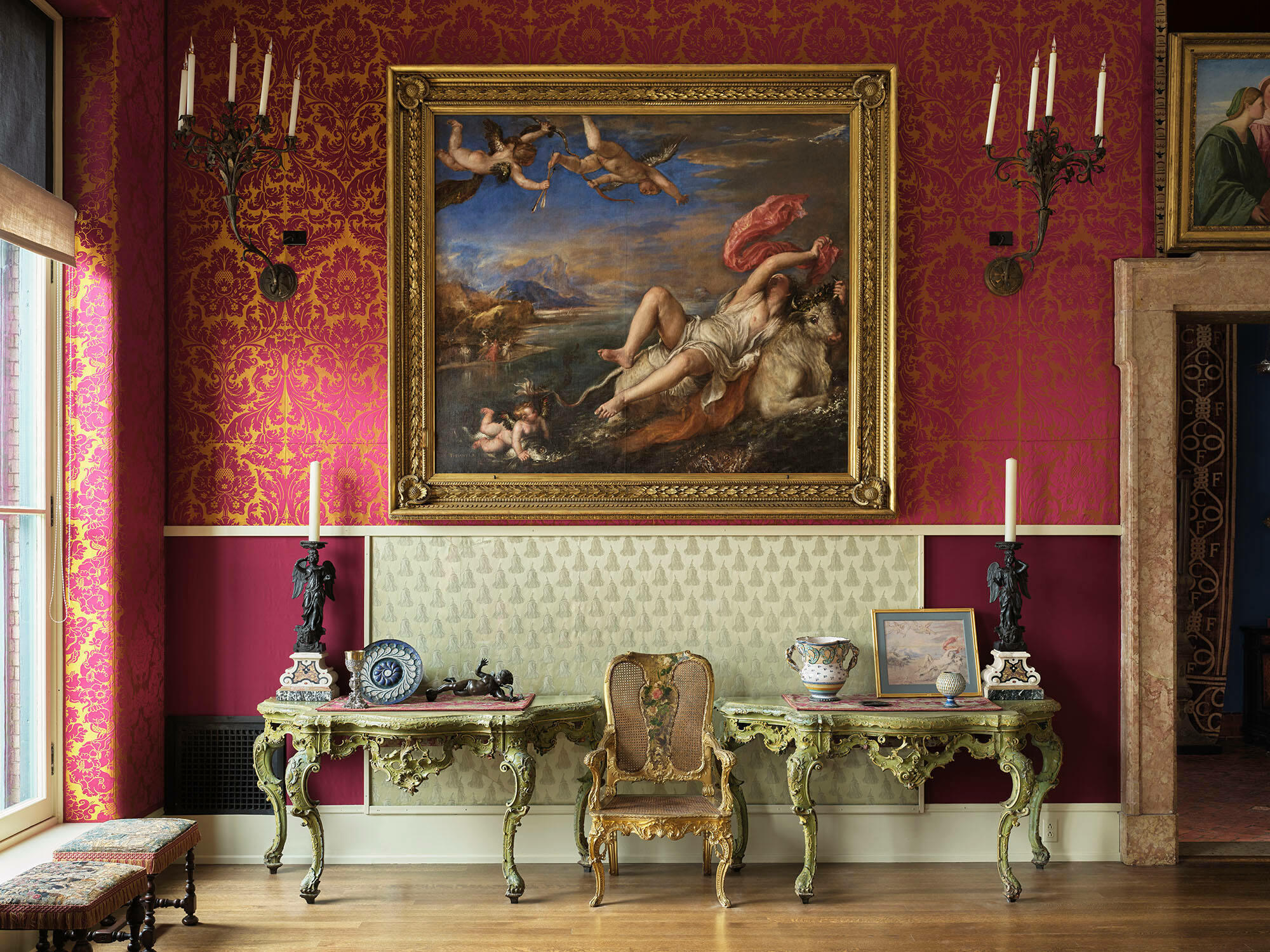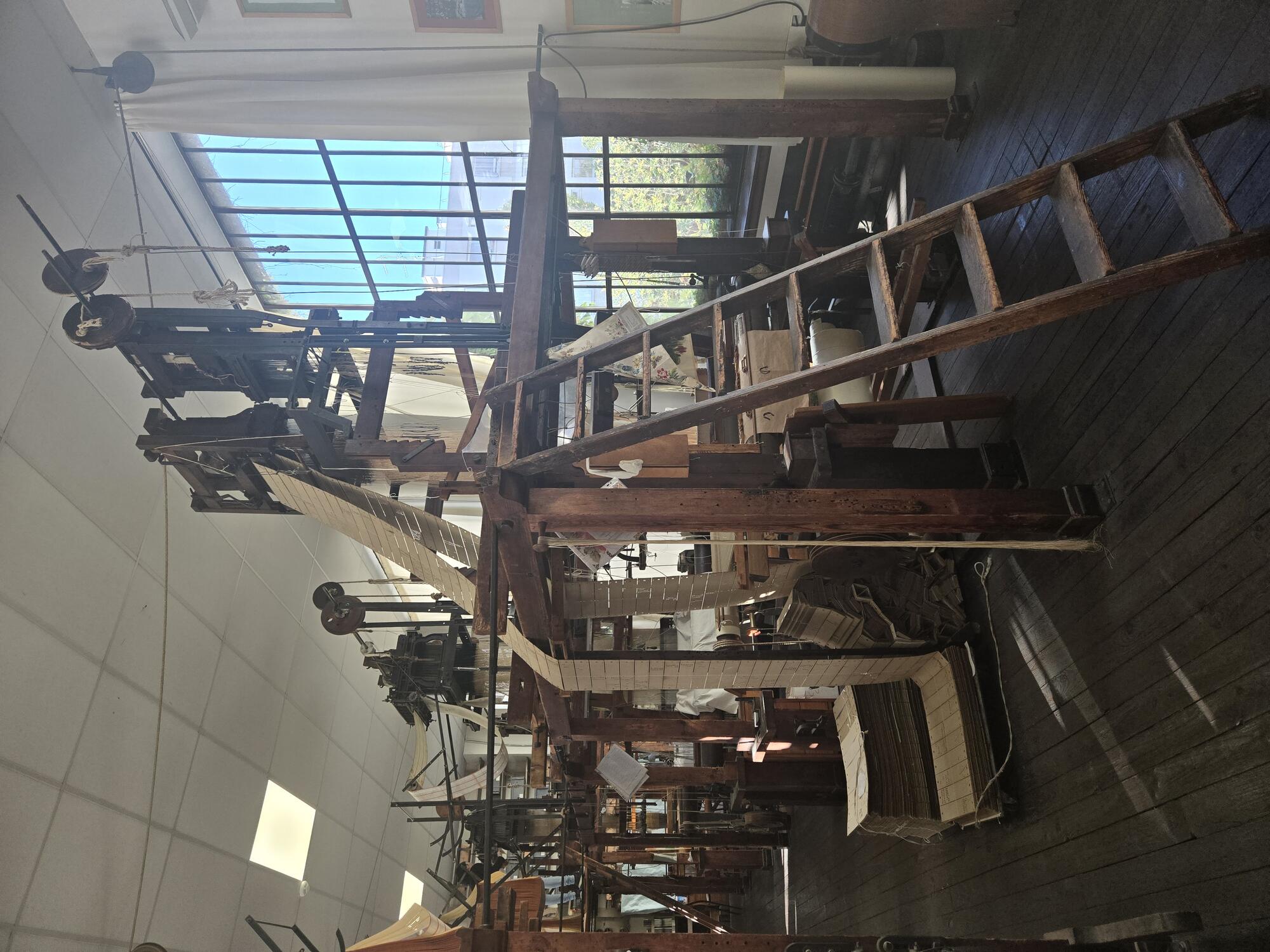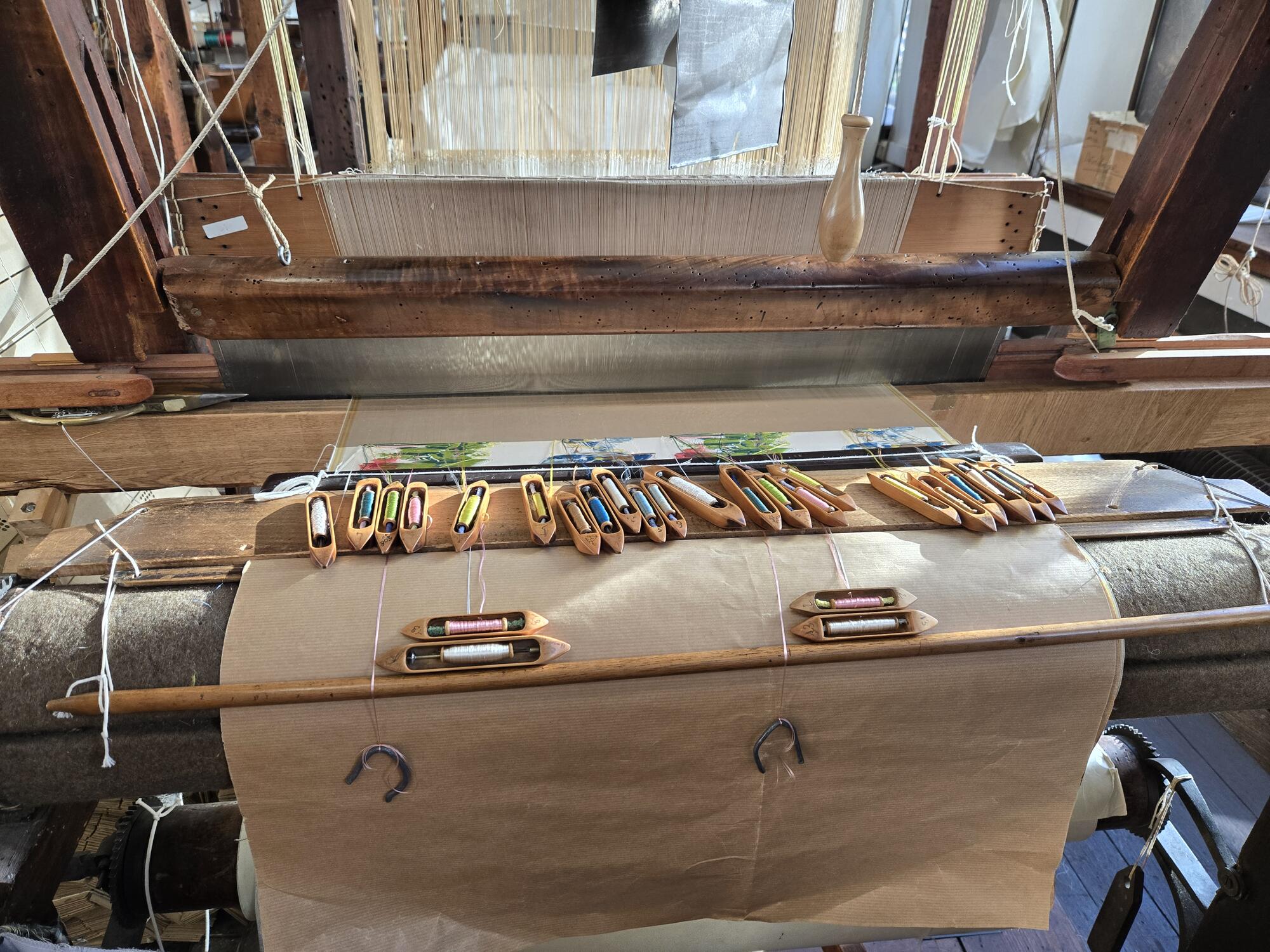Wall textiles are vital in uniting the appearance of the galleries of the Isabella Stewart Gardner Museum and understanding the founder’s aesthetic. When Isabella went shopping for textiles to upholster her Museum's walls, she purchased large quantities of fabric from Venetian antique dealers. Isabella directed wall upholsterers to creatively and deliberately piece together these textiles into wallcoverings. She used contrasting colors, patterns, and weave structures to create inviting corners with small motifs that draw you in and big vignettes with large patterns that encourage you to step back.
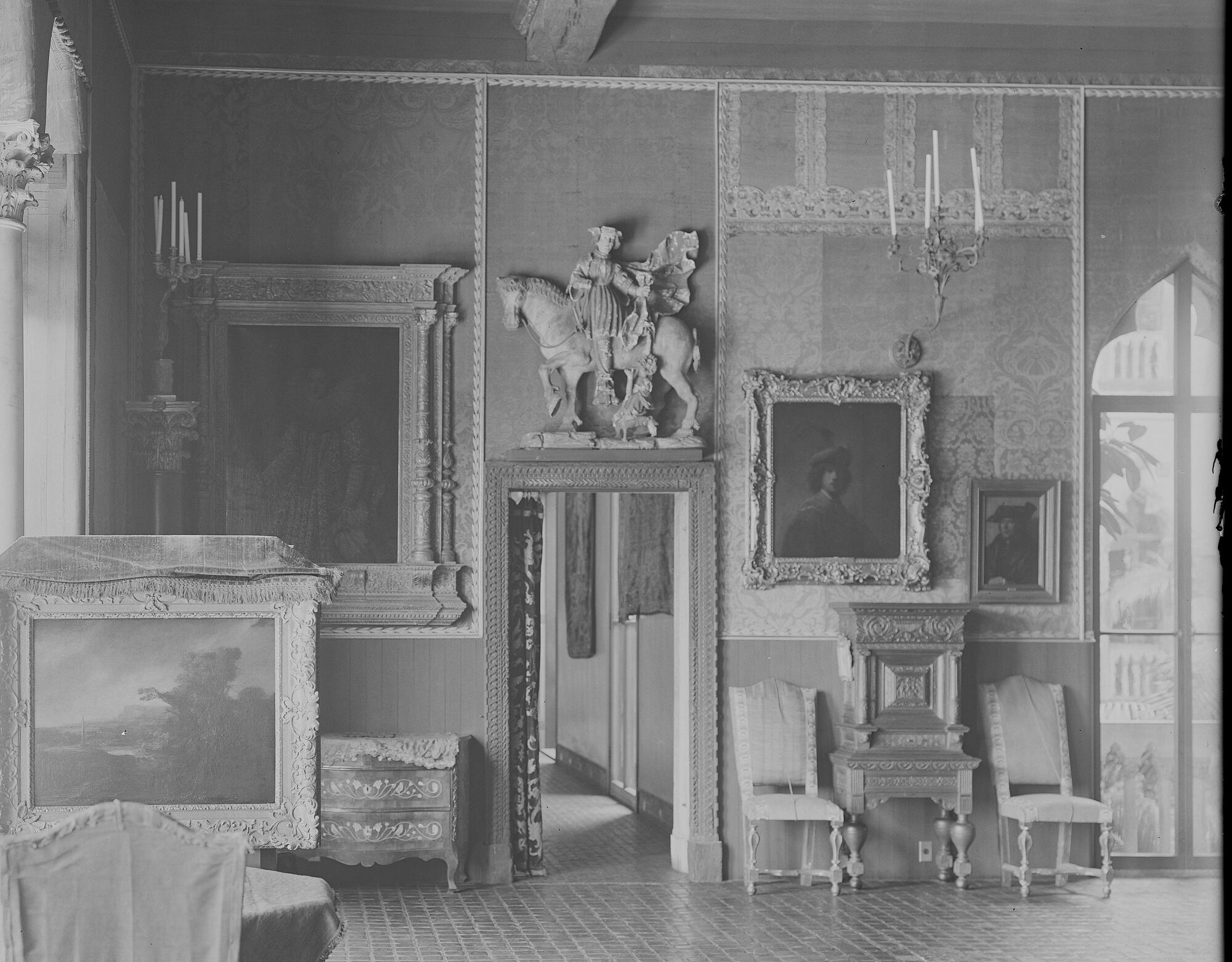
Isabella Stewart Gardner Museum, Boston. Photo: T. E. Marr & Son Photography.
The northwest corner of the Dutch Room, with various silk textiles on the walls.
History of Wall Upholstery Replacements
By the 1950s, the original wall textiles selected by Isabella were faded and damaged due to their sensitivity to light. These wallcoverings were antiques when they were first installed and were not suited to the demands of permanent display. Museum staff replaced the wall textiles with new ones that were more subdued than the originals—one or two textiles replaced the original variety of tones and patterns. In the Dutch Room, for example, one light-green, bird-and-flower patterned damask replaced the original collage of ten different textiles.
Since the 1990s, gallery restorations have prioritized replacing the inaccurate aging wall textiles of previous campaigns, and the walls in the Blue Room, Yellow Room, Raphael Room, and Titian Room now match Gardner’s original vision and creative spirit. The Dutch Room is the final gallery needing attention, and we are commissioning new silk damask wall upholstery as part of the room’s multi-year, floor-to-ceiling restoration.
Commissioning New Dutch Room Wall Upholstery
Antique silks similar to the ones Isabella originally used in the Dutch Room are not only difficult to source — they are also too fragile to withstand long-term use as wallcoverings. We want densely woven silks that won’t sag with time or fade under light from the Courtyard. We also need a material that can convincingly pass for antique, handwoven silk damask. This weave structure scatters light beautifully, and replacing it with a printed imitation would dull the walls.
With Isabella’s high standards in mind, we headed to Lyon, France, to meet with textile manufacturer Prelle & Cie. For centuries, Lyon was the silk-weaving capital of Europe, and the street names, architecture, and murals show the city’s pride in its “canuts”–the silk weavers. Prelle is the last family-owned manufacturer still weaving silk in Lyon. They specialize in historical reproductions and have previously worked with the Museum on the Raphael Room and Titian Room restorations. As a recent addition to the conservation team at the Gardner, this was my first time visiting Prelle. I started with a tour of the mill and showroom, escorted by Sabine Verzier, whose family has managed the business for six generations.
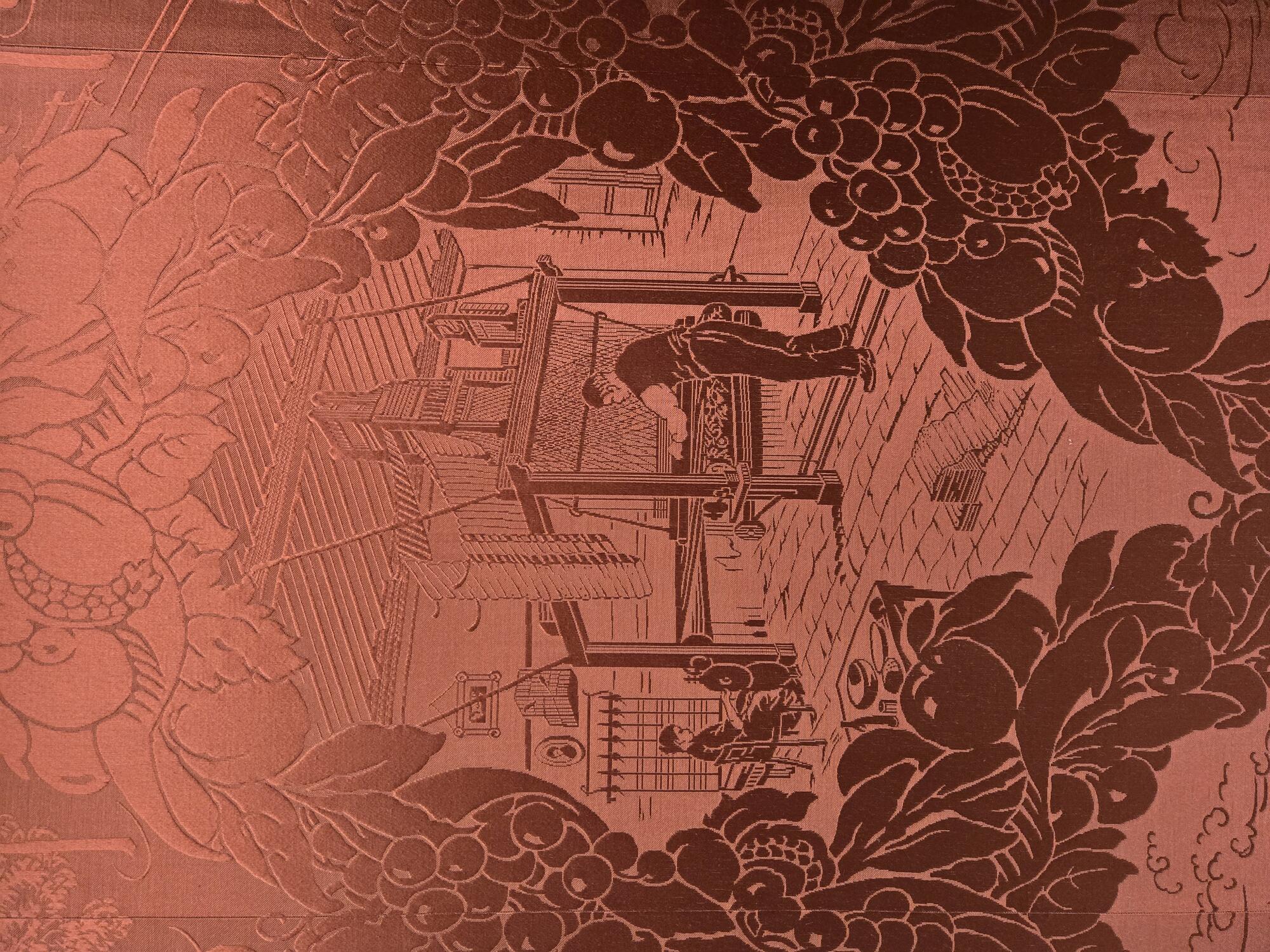
Prelle et Cie, Lyon, France
Close-up image of Prelle’s “Damask de Lyon,” showing silk weavers at work
Being at Prelle felt like going back in time. Their original 19th-century looms are still in use, and skilled handweavers train to produce cut velvets and multi-colored brocades. Our “strike-offs,” small samples prepared to test colors and weave structures, will be made on these handlooms. After a strike-off is approved, production will move to larger, more modern looms.
We also saw the 21st-century industrial looms in action. This is where our wall textiles are woven using advanced machines adapted to replicate historic fabrics at impressive speeds. In these rooms, thousands of meters of silk thread are meticulously checked, weighed, and measured to prepare the “warp.” These threads are then carefully strung into jacquard looms, allowing individual control of each yarn to create intricate patterns. The punch card system that operates these looms is the direct ancestor of early computer programs, and this versatile technology was invented in Lyon.
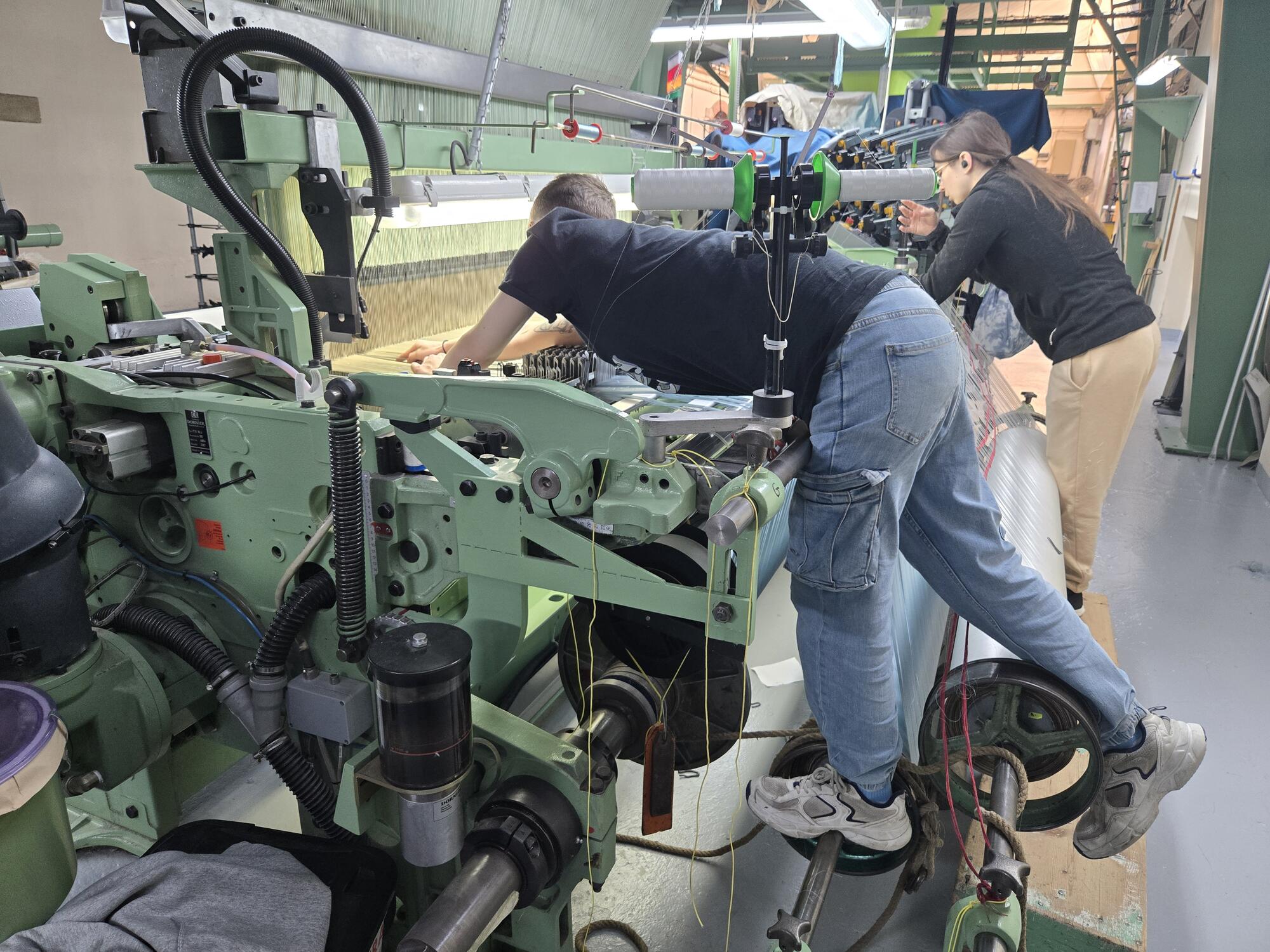
Prelle staff fixing a snapped thread on the jumbo loom. Plainwoven textiles have a single set of warp yarns running vertically on a loom. This machine is set up to weave lampas, a complicated pattern with three sets of vertical warp yarns. Prelle et Cie, Lyon, France.
Isabella had famously high standards for herself and her Museum. Sourcing materials that are up to those standards is exciting and challenging. After three long days of discussing color and design, we left Lyon confident that the Dutch Room wall textiles will “wow” visitors upon reinstallation. Stay tuned for more!
